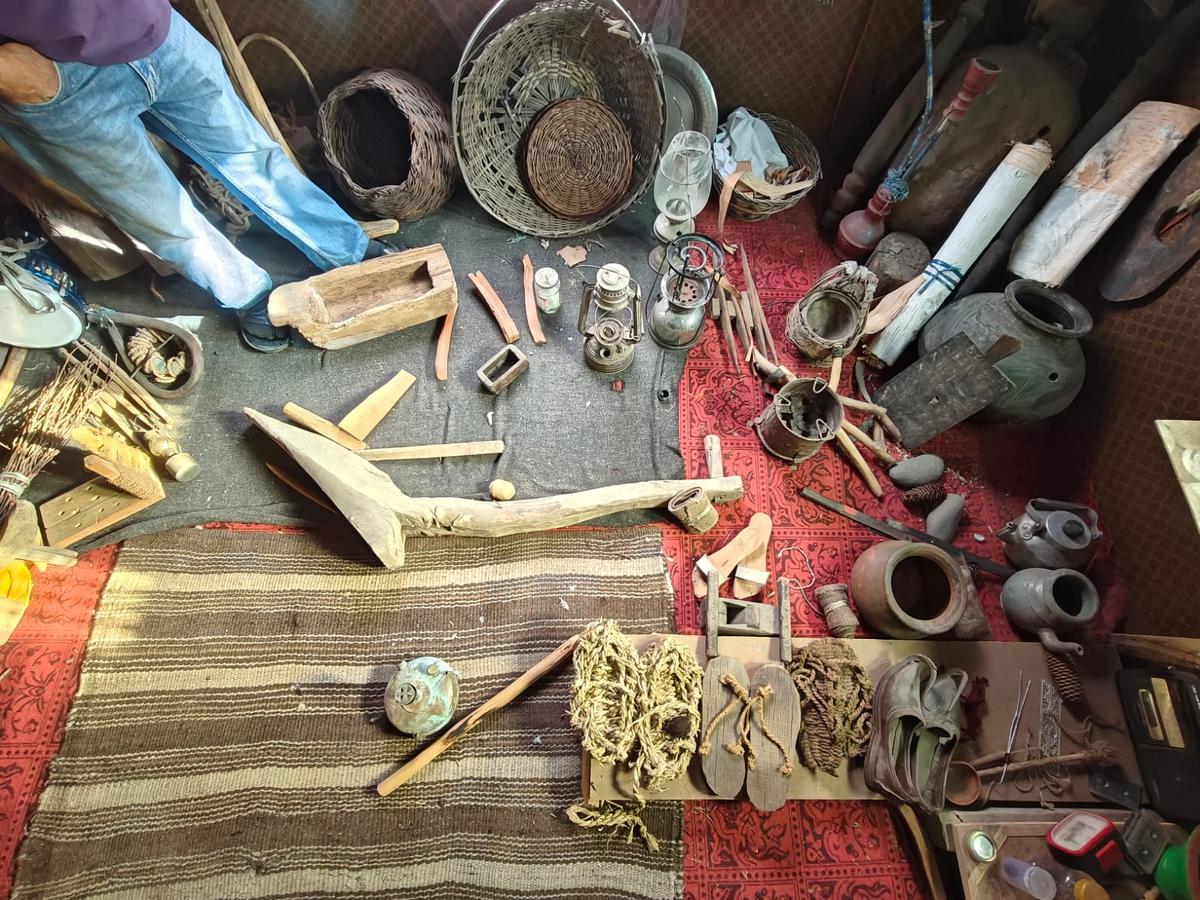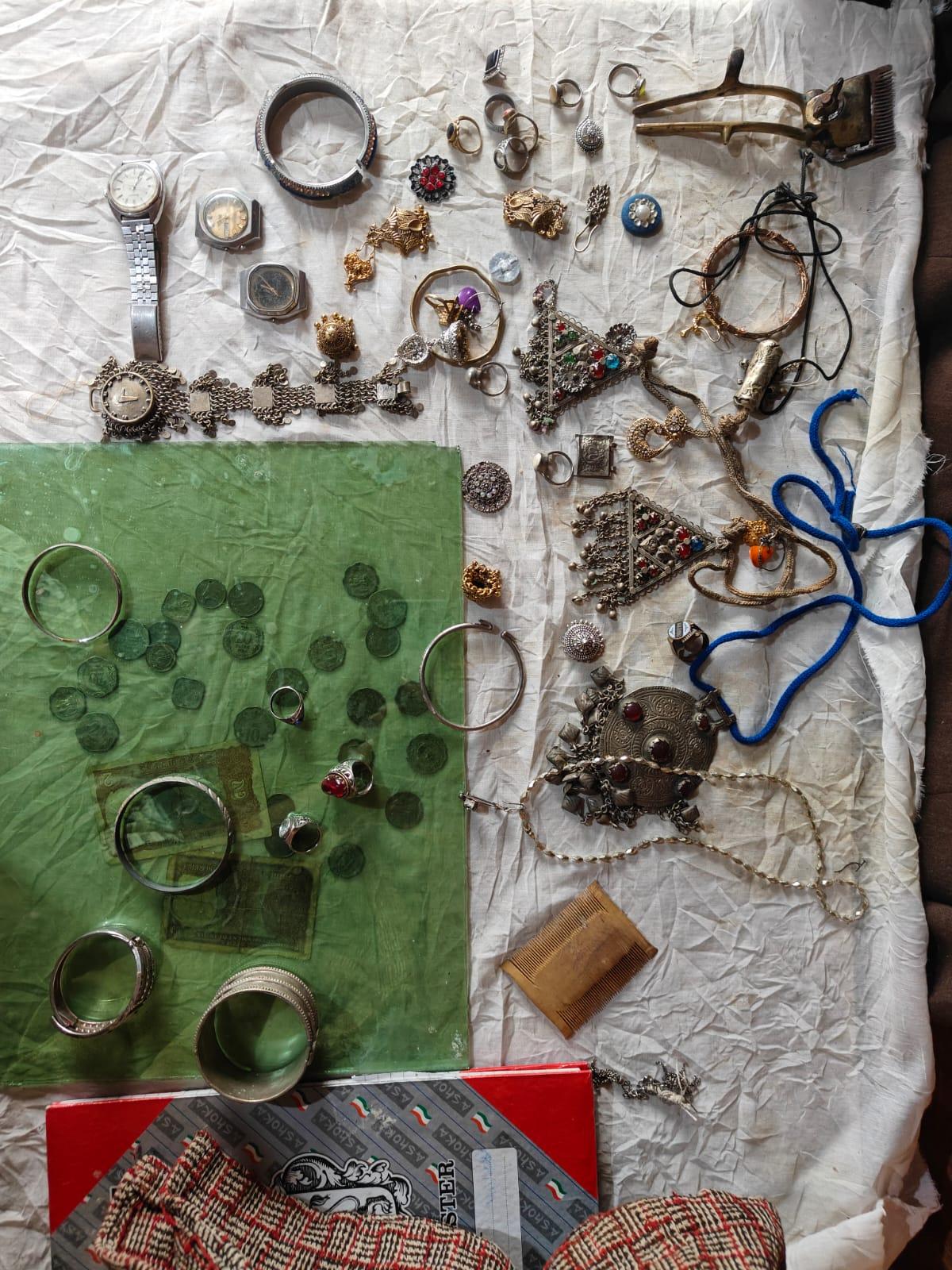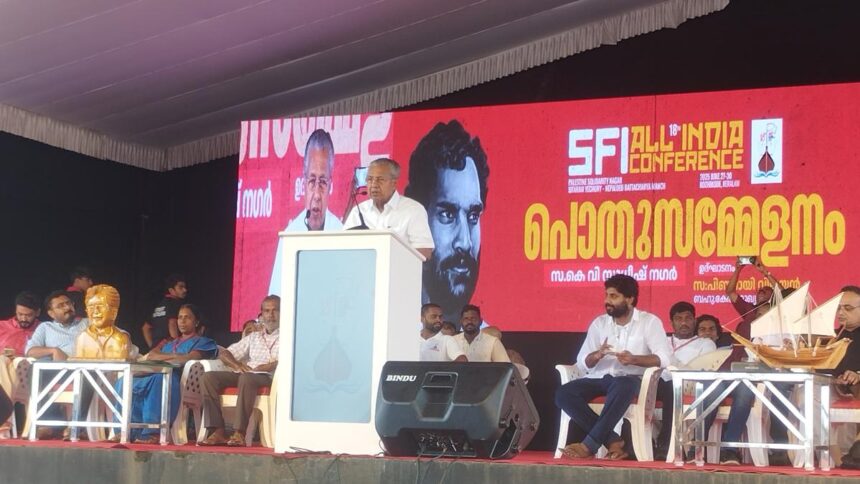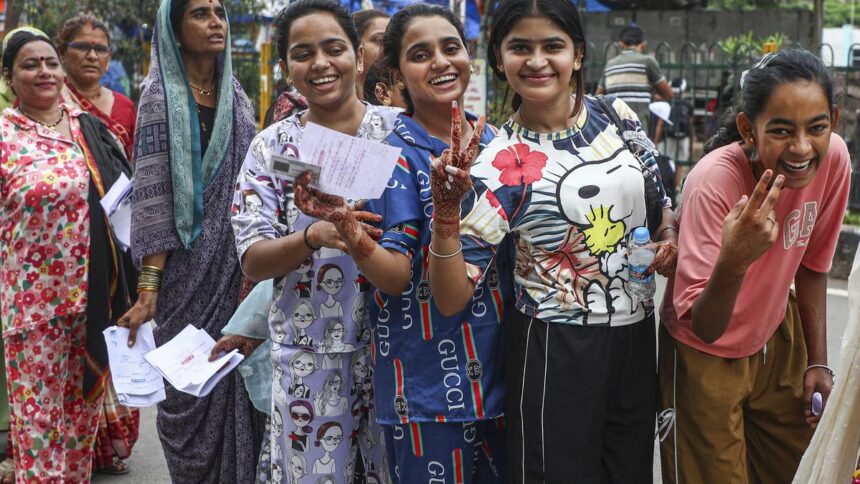The Dard-Shin tribe, which once ruled large parts of Kashmir in the 16th Century and is now nestled in the Gurez valley with Pakistan border posts in the backyard, has found an archiver in Basheer Ahmad Teroo.
For the past three years, Mr. Teroo, 48, has been travelling the length and breadth of what was once known as Dardistan, collecting vestiges of his community’s culture – items that he has begun storing and displaying at his home in Dawar town.
In 2022, just as India was coming out of the COVID-19 pandemic, Mr. Teroo said his mother had gifted him 75 items – jewellery, kitchen utensils, footwear, clothing among others. “I remember she said it was for safekeeping. These were things that reminded her of our community and how we have lived. I just thought one morning, why not do something with it,” he recalled.
He started displaying the items whenever he would visit the Dard-Shin people across the Gurez region, including Tulail, where the community is concentrated. In three years, Mr. Teroo has amassed 457 antique items – ranging from a woman’s 20-year-old wedding pheran to a 107-year-old wooden horse saddle – all donated or sold by people of the community, most of whom have found Mr. Teroo instead of him seeking them out.

Articles collected by Basheer Ahmad Teroo who runs the Dard-Shin Museum.
“The internet has helped. I put out photos on Facebook, and my visits also help. So, people reach out to me themselves. Sometimes, they just want to leave a piece that represents their community’s culture in safekeeping, just like my mother did. There are hundreds of more items that are currently in the pipeline, and I have also started the work of logging and cataloguing them,” he told The Hindu while showing around his small home which also doubles up as the Dard-Shin Museum.
Right outside Mr. Teroo’s home sits a grey log with a deep washbasin-like depression. “This is a washer. We fill it up with water, put our clothes in it, and then stomp on it with our feet to rinse it. It helps with heavy materials that our community is used to wearing,” he said, before proceeding to show a room in his museum that displayed traditional clothing of the Dard-Shin people, made of sheep’s wool.

Jewellery used by the Dard-Shin people are also a part of the collection.
While one room of the museum houses clothing and jewellery items, the second room has daily household and farm items such as horse saddles made of wood, footwear made from grass among others. There is a collection of Shina literature and poetry written by eminent Dard-Shin writers. “These will remind the Dard-Shin people of their community’s identity and which of it they want to preserve,” Mr. Teroo said, showing a cigarette case gifted to a Dard-Shin man by Maharaja Hari Singh in the early 1940s.
The Dard-Shin is classified as a Scheduled Tribe by the India government and the community traces its origins to Gilgit. Currently, the community in India is spread over the regions of Gurez, Tulail, and Drass. The Chak dynasty, belonging to this community, ruled over Kashmir for over 25 years in the mid-16th Century before surrendering to Akbar their territory known as Dardistan. The 2011 Census recorded a total of 48,440 Dard-Shin people, for whom the principal means of sustenance are farming and raising livestock, and more recently, tourism.
The community’s geography in India has placed it literally on the edge, with mountains in the backyard housing Pakistan posts in Pakistan-occupied Kashmir. However, the Indian Army in the Gurez sector has maintained that the security forces and the Dard-Shin people share an intimate bond that has helped India secure the region and the community live peacefully.
Mr. Teroo said that when he was starting his museum, the Indian Army had approached him. “They wanted to build a Shina cultural centre to celebrate our culture and had approached me to display my items at the museum they were building,” he said.
“I asked the people who placed their trust in me with these items. One or two said I should sell those if it helps me financially, but most of them were uncomfortable with the idea of me giving away all the things that they trusted me with. So, I said no,” Mr. Teroo said.
A year later, the Indian Army built the Shina Culture Centre in Dawar with expert anthropologists and historians reconstructing articles of Dard-Shin culture as observed by them in Mr. Teroo’s collection.
Just outside Dawar town, the Shina Culture Centre sits on the banks of Kishanganga river. Inside the campus is a small hut, representative of a traditional Dard-Shin kitchen, with a wooden structure framing the Habba Khatoon peak for tourists to take photographs. The museum displays artefacts and details their uses and also houses sections on the history of the community. In the language section, there are posters showing “common words” in Shina language and Sanskrit, and mentions of ‘Dardistan’ in works such as the Mahabharata and Rajatarangini.
“These experts that helped build the culture centre came to visit my collection. The items in the museum are good and accurate but, they were built recently for the displays. The items in my collection are everyday items that were actually used and have memories attached to them,” Mr. Teroo said.
While his social media presence continues to get him more articles for his collection, Mr. Teroo said he does think of monetising it. “But I can’t think in that direction unless I have a sure-shot plan of helping my community with that.”
Published – August 09, 2025 10:25 pm IST



















